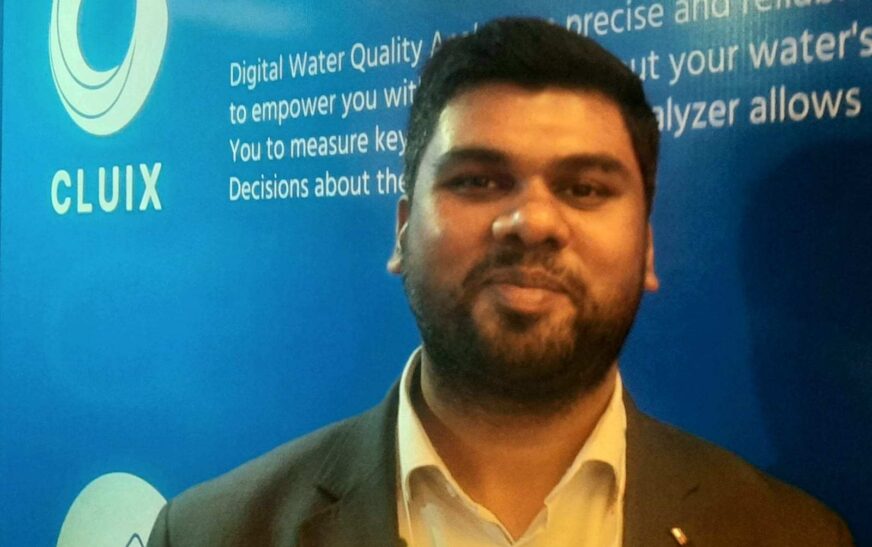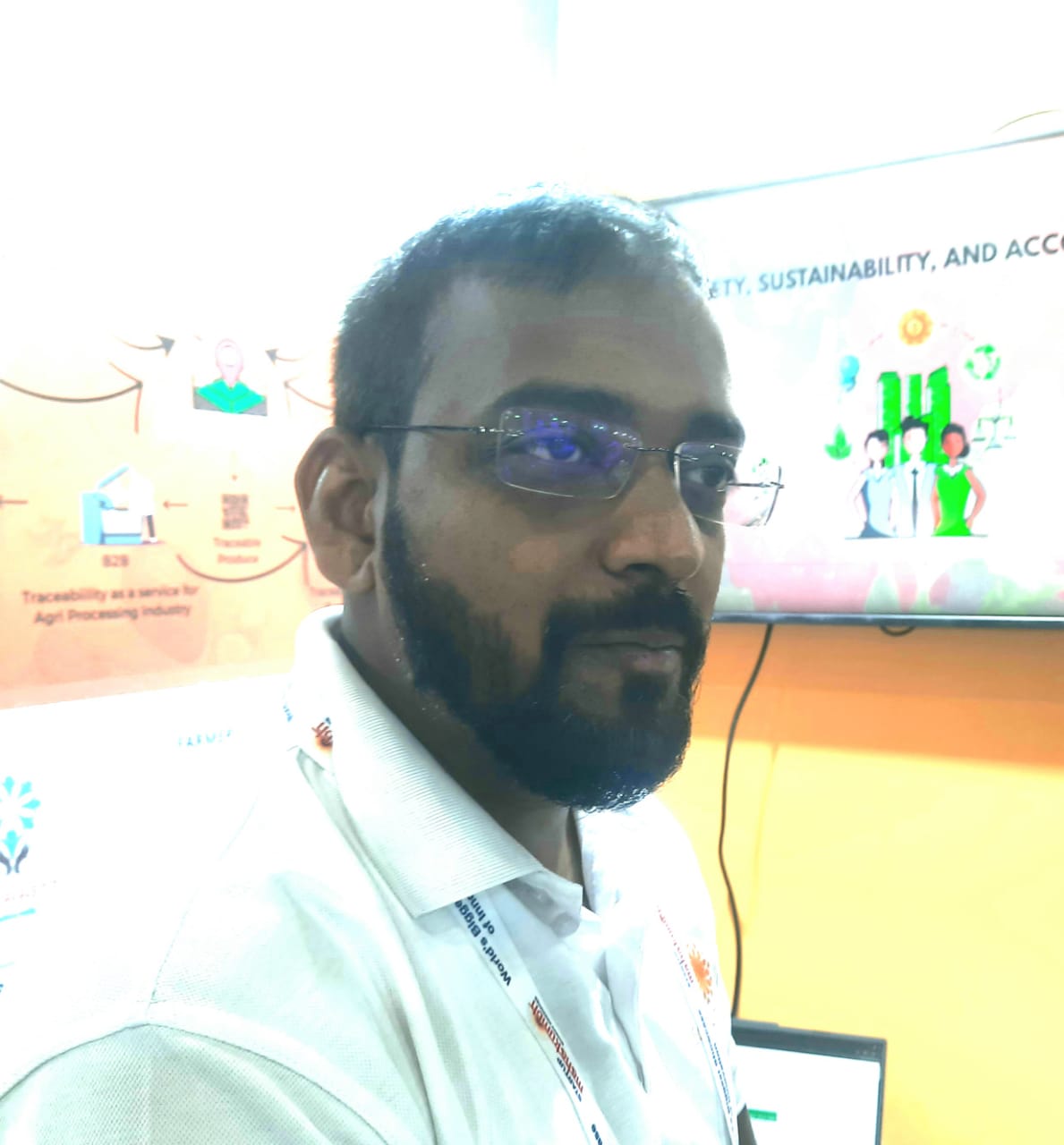CLUIX, a cutting-edge deep-tech startup, revolutionizes water safety by monitoring and reduces the presence of undetectable contaminants in drinking water. They have developed a handheld multi-parameter Water Quality Analyzer, designed to test eight critical parameters of drinking water. The device seamlessly integrates with the Water Quality Monitoring & Surveillance (WQMS) system under the Jal Jeevan Mission, ensuring rigorous quality control. With a rechargeable battery, Bluetooth and Wi-Fi connectivity, and a capacitive touchscreen, the analyzer offers a user-friendly experience with intuitive, step-by-step guidance for effortless testing.
In an exclusive conversation with The Interview World at the ASSOCHAM Conference on Enhancing Water Use Efficiency, Robin Singh, Founder and CEO of CLUIX, highlighted the innovative features of this IoT-powered device. He also provided a glimpse into the upcoming product poised for market launch, discussed the device’s implementation across various states, and shared his long-term vision for advancing water quality assurance.
Q: Could you elaborate on the specific product you’ve developed to ensure water sanitation and maintain its purity for safe consumption?
A: We have introduced a groundbreaking handheld, IoT-based water quality analyzer that redefines the assessing of water quality. Traditional instruments demand the expertise of trained professionals, limiting their accessibility and usability. We design innovative solution, keeping the layperson in mind, making water quality analysis both simple and intuitive for anyone to perform. This device seamlessly combines multiple advanced techniques and measures various key parameters, ensuring precise and reliable results. By bridging the gap between complexity and usability, our analyzer empowers users to monitor water quality effectively without requiring specialized knowledge or training.
Q: Could you elaborate on the specific parameters involved?
A: Water quality entails three primary types of parameters: physical, chemical, and heavy metals. Physical parameters are the most common and include factors such as Total Dissolved Solids (TDS), pH levels, free residual chlorine, and turbidity. These factors play a significant role in determining the clarity, acidity, and basic safety of water.
Chemical parameters, on the other hand, focus on specific substances within the water, including nitrate and fluoride levels. These chemicals, while naturally occurring, can become hazardous when present in excessive concentrations, often due to agricultural runoff. Lastly, heavy metals—such as iron, copper, and lead—represent a third critical category. These metals, typically introduced through industrial effluents, can have severe health implications if they contaminate drinking water sources.
The contamination of water bodies can arise from various sources, each influencing the type of pollutants present. In agricultural regions, the extensive use of pesticides often results in high concentrations of nitrates and fluorides in nearby water sources. Conversely, water bodies located near industrial areas are more prone to contamination from effluents, leading to an increased presence of heavy metals. Recognizing these risks, the Government of India, in collaboration with international bodies such as the World Health Organization (WHO) and the Bureau of Indian Standards (BIS), has established a list of 14 critical water quality parameters. We should monitor these parameters regularly as part of the Water Quality Monitoring and Surveillance (WQMS) framework to ensure public safety.
To meet this need, our company has developed an innovative instrument specifically designed to test drinking water against the IS 10500 standards—an initiative that marks a first in India. While many existing water quality testing instruments are tailored for industrial applications, such as the assessment of treated, processed, sewage, or marine water, our product is uniquely targeted toward ensuring the safety of drinking water.
The IS 10500 standard sets forth permissible limits for a range of parameters that determine water’s potability. Our instrument not only tests for these 14 critical parameters but also provides clear results on whether each parameter falls within the safe range, thereby ensuring that the tap water you consume meets the highest standards of safety and quality.
Q: Can you elaborate on the six parameters that will be included in the new instrument you’re introducing, and what specific features or capabilities will each of these parameters offer?
A: Our journey began with a significant milestone in 2021 when we won the Jal Jeevan Mission Challenge, an initiative aimed at developing portable water quality monitoring devices. Out of ten initial entrants, only two succeeded in creating functional instruments: a well-established, 60-year-old company and our team. We introduced the CLUIX C011, a device capable of testing eight water quality parameters. The government’s immediate interest was evident, leading to substantial orders due to their sizable budget allocated for quality monitoring, which constitutes 3% of the total Jal Shakti budget.
Our initial deployment took place in Haryana and involved collaboration with various development agencies. This phase, essentially a pre-commercialization trial, provided critical insights into the practical requirements and limitations of our technology. It became clear that the market needed devices capable of measuring more parameters, as water quality issues are highly geographical and vary significantly from one region to another. For instance, areas may struggle with nitrate contamination, while others, like Chennai, might face fluoride issues.
To address these diverse needs, we embarked on refining our technology. Initial feedback highlighted limitations with the CLUIX C011, particularly regarding its smaller screen and user experience. Taking this into account, we developed the CLUIX C012, which features a larger screen and extended battery life. Importantly, this new model comes with enhanced capabilities, allowing it to measure more parameters while maintaining the same cost. This advancement underscores our commitment to manufacturing efficiency, demonstrating that we can scale our solutions effectively without compromising affordability.
The CLUIX C012 represents a significant leap forward in our product lineup. It is designed to meet the evolving demands of large-scale water quality monitoring for the next 2-3 years. With rich features and improved user experience, it will serve as a comprehensive solution for diverse water quality challenges. This product reflects our dedication to innovation and positions us as a key player in water quality management. We are ready to tackle the complexities of this vital issue on a broader scale.
Q: Have you implemented this device in any states so far?
A: We have effectively implemented our advanced water quality monitoring solution in Haryana, deploying 40 devices across the region. Furthermore, we provided a state-of-the-art dashboard for real-time data visualization. This dashboard allows stakeholders to continuously monitor water quality, with data transmitted in a clear, actionable format.
We focus on two villages, Brijpur and Jallik, where we introduced this technology to Anganwadi workers with Haryana’s chief chemist. The transition from traditional field test kits to our digital devices enhanced the accuracy and efficiency of water quality assessments. Previously reliant on color charts, the Anganwadi workers now benefit from devices that automatically generate ratings and provide real-time reports. This advancement has greatly enhanced their ability to monitor water quality. Now, they consider it as a more convenient and reliable solution.
A crucial aspect of this project is its integration with community science. Local communities possess an intrinsic understanding of the water quality issues affecting their region. While state or regional labs can provide valuable data, they often lack the nuanced insight that local residents have. By empowering these communities with our digital technology, we enable them to track water quality more effectively. Moreover, we take proactive measures to address any issues.
We replicated this successful model in Assam in collaboration with Tata Trust, extending our reach to ten villages. The results mirrored those in Haryana, demonstrating the efficacy of our approach. Our initiatives are in alignment with the Sustainable Development Goals (SDGs), reinforcing our commitment to advancing water management and sustainability. Through these projects, we are not only improving local water quality monitoring but also fostering greater community engagement and empowerment.
Q: What are your long-term goals and how do you plan to achieve them?
A: By 2027, we aim to be operational in five countries, with a goal of positively impacting 100 million lives. We are actively scaling our efforts to meet this ambitious target. Moreover, by 2030, we want to broaden our presence to 12 countries and extend our influence to 300 million people. Our strategic expansion and commitment to scaling operations are designed to drive significant, global social impact and achieve these milestones.








